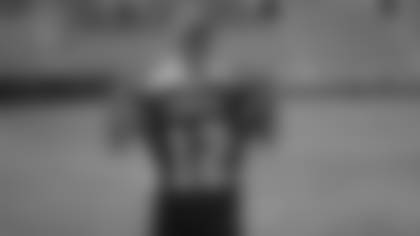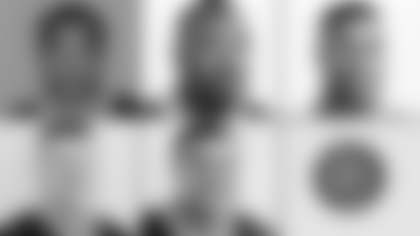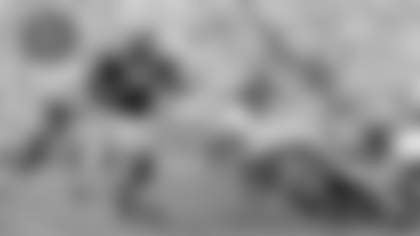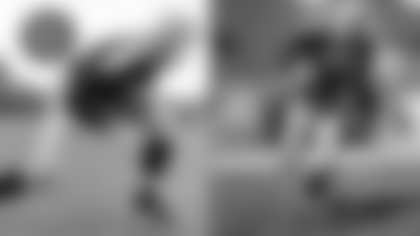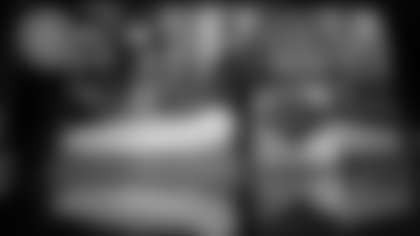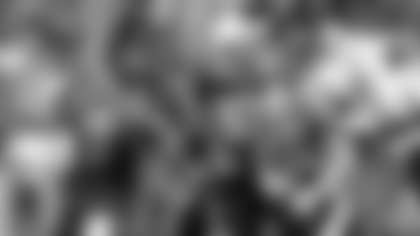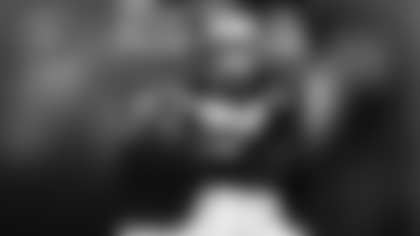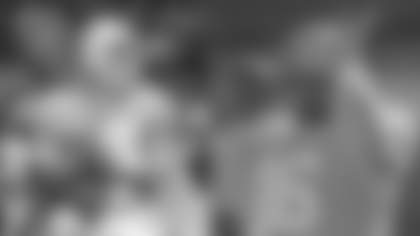Last in a seven-part series of "best of" drafts in Packers history.
Over the first 89 drafts, there have been 15 administrators or head coaches who have had final word in the Green Bay Packers' draft room.
Curly Lambeau, as coach and then as vice president-coach, was the first from 1936-50. Coach Lisle Blackbourn made the picks during those windfall drafts from 1954 through the first four rounds of 1958. Coach and general manager Vince Lombardi was in charge from 1960-69, although he had stepped down as coach before the '69 draft and didn't exercise his authority over those selections in his final days as GM.
More recently, Ron Wolf (1992-2000), Ted Thompson (2005-17) and Brian Gutekunst (2018-present) have made the calls as general manager.
The others were coach Gene Ronzani (1951-53); coach Scooter McLean (the final 26 rounds of the 1958 draft; first four rounds of the 1959 draft); talent scout Jack Vainisi (the final 26 rounds in 1959); coach and general manager Phil Bengtson (1970); coach and general manager Dan Devine (1971-74); coach and general manager Bart Starr (1975-83), although he was stripped of his GM title before his last three drafts; coach Forrest Gregg (1984-86); executive vice president of football operations Tom Braatz (1987-91); and coach and general manager Mike Sherman (2002-04).
Here are the best drafts by each of those nine men.

Fans can now register for free entry to the 2025 NFL Draft by downloading the NFL OnePass app or by registering online!
Best of Ronzani's drafts: 1952
No. 1, Babe Parilli, QB, Kentucky; No. 2, Billy Howton, E, Rice; No. 3, Bobby Dillon, S, Texas; No. 5, Dave Hanner, DT, Arkansas
Parilli was the fourth overall choice and second quarterback to go after Vanderbilt's Billy Wade was taken with the bonus pick. Howton, Hanner and Dillon were named all-Southwest Conference. Rice's Howton (6-2, 180) was selected as both an offensive end and defensive back; Arkansas' Hanner (6-3, 235) as an offensive tackle; and Texas' Dillon (6-1, 180) as a defensive back.
Ronzani, on losing the draw for the bonus pick (Green Bay Press-Gazette, Jan. 19, 1952): "We got our bonus choice anyway because I would have picked Parilli if I had won it."
Rice coach Jess Neely (United Press, Dec. 19, 1951): "That end of mine, Billy Howton, is the finest end in college football since Don Hutson of Alabama."
As a rookie, Howton finished eighth in the league with 53 receptions, but first with 1,231 yards for a 23.2 average per catch. His yardage total broke Don Hutson's 10-year-old club record. Howton also caught 13 touchdown passes in 12 games. Parilli shared the Packers' quarterback duties with third-year pro Tobin Rote. Rote finished second in the league in passing and Parilli, third. Dillon and Hanner also were rookie starters.
Howton played seven seasons with the Packers and ranked second to Hutson in career catches and yards gained on receptions. Dillon played eight seasons and still holds the Packers' career record for interceptions with 52. Hanner was a stalwart at defensive tackle for 13 seasons, starting all but the last part of his last season.
Parilli played only four years in Green Bay and never fulfilled his potential. At age 29, he was cut by Lombardi and later caught on with the Boston Patriots, where he passed for more than 16,000 yards in seven seasons.
Ronzani was assisted by Vainisi, whom he had hired two years earlier to keep records on college players and compile statistical information.
Best of McLean's drafts: 1959 (First four rounds)
2, Alex Hawkins, HB, South Carolina; 3, Boyd Dowler, E, Colorado
On Dec. 1, 1958, McLean called the shots during the first four rounds of the '59 draft before losing his job after a 1-10-1 finish.
Dowler took over as the starting flanker in the seventh game of Lombardi's first season and was named United Press International rookie of year. Ten years later, he was a 1960s NFL All-Decade selection.
At Colorado, Dowler led the Buffaloes in passing three straight years and in receiving as a junior and senior, playing in a multi-set offense. He played quarterback on wing-T plays and blocking back in single-wing formations. He also punted.
Hall of Fame quarterback and Hardin-Simmons head coach Sammy Baugh (Green Bay Packers Player Talent Report, Nov. 18, 1958): "I worked with (Dowler) for five days this spring. He is a real good prospect for pro ball. 1) He is a great punter. Worth carrying as a punter alone. 2) Has excellent speed. Especially for a big man. 3) This boy has all the tools to be a pro QB. … He will need a lot of work passing as he doesn't have the opportunity to throw constantly. He has a good arm and can throw the ball the way you want. 4) A very smart kid. Catches on fast. Has good attitude. I believe he is a fine prospect. He is a great receiver and will make your club somewhere."
Clive Rush, Oklahoma assistant coach, former Packers end and future Patriots head coach on Dowler (Green Bay Packers Player Talent Report, Oct. 31, 1958): "A real prime prospect. A natural athlete. (Oklahoma coach) Bud Wilkinson after the game said he was a great football player. Fine speed. Has buggy-whip arm. Looked good but will need work on throwing. A No. 1 draft choice for someone."
Hawkins was waived by Lombardi on the second-to-last cutdown date of training camp and wound up becoming a special teams standout for nine years with the Baltimore Colts.
Randy Duncan, a quarterback from Iowa, was both the Packers' first round-pick and the first in the draft. He signed in Canada and lasted two years.
McLean's selection of Howard Payne lineman Ken Gray in the sixth round of the second phase of the 1958 draft was an outstanding pick, except that he cut him.
Best of Vainisi's drafts: 1959 (Final 26 rounds)
27, Tim Brown, HB, Ball State
After making a significant contribution to the Ronzani and Blackbourn drafts as the Packers' talent scout, Vainisi actually made the picks for the first and only time during the second phase of the draft, held Jan. 21, 1959. The Packers had cut ties with McLean but had not yet hired Lombardi.
Former Packers players Verne Lewellen and Boob Darling joined Vainisi at the team's table in the draft room and assisted him.
After playing in Lombardi's Packers debut, Brown was cut. He subsequently signed on with Philadelphia's taxi squad, made the team in 1960 and was named to three Pro Bowls during a superb, 10-year NFL career.
Best of Bengtson's drafts: 1970
1a, Mike McCoy, DT, Notre Dame; 1b, Rich McGeorge, TE, Elon; 2, Al Matthews, DB, Texas A&I; 3, Jim Carter, LB, Minnesota; 4, Ken Ellis, WR, Southern
With Lombardi in his final days as general manager in late January 1969, Bengtson was allowed to make his own choices and over the objection of his scouting staff took defensive tackle Rich Moore with the 12th overall pick. Bengtson followed that by drafting Penn State offensive lineman Dave Bradley in the second round and wide receiver John Spilis in the third. All three were busts.
Packers director of player personnel Pat Peppler on the '69 draft (Christl interview, Feb. 14, 2002): "Phil went completely against everybody on the staff. The worst part was that we went through the process like we always did with Vince and Vince let us alone. He thought it was Phil's team and bent over backwards. Everybody thought Vince would be meddling and I think he bent too far. We got it all lined up on the board and Rich wasn't up there. But when our selection was up, Phil jumps up and says, 'We're going to take Rich Moore.' He thought he had another Merlin Olsen. I was as upset as I was with anything that had happened in the draft up till then. I left the room and Vince met me sort of in the hallway. Vince knew I was p-----. He said, 'Pat, I'm sorry, but it's Phil's team.'"
Bengtson listened to Peppler and his scouts and did better in his only draft after being named to replace Lombardi as GM. Bengtson selected five players who started on the Packers' 1972 NFC Central Division champions.
As director of player personnel, Peppler assisted Lombardi, Bengtson and Devine with their drafts from 1964-72.
Ellis was converted to cornerback and was named an Associated Press All-Pro in 1972. He also was a two-time Pro Bowl selection during his six seasons in Green Bay. Carter also made the Pro Bowl in 1973. Carter, McCoy and McGeorge were seven-year starters; Matthews, a five-year starter.
McCoy was the second overall pick in the draft after Pittsburgh took Terry Bradshaw.
Miami director of player personnel Joe Thomas (Fort Lauderdale News, Jan. 6, 1970): "You just don't see many boys (McCoy's) size with his quickness."
Notre Dame defensive line coach Joe Yonto, on rating McCoy over Alan Page and Kevin Hardy, two other recent first-round DTs at the school (Milwaukee Journal, Jan. 27, 1970): "I don't see how Mike can miss. … I'd say Mike has more strength than Hardy. … And when it comes to toughness, I'd have to rate Mike No. 1 over all of them."
Packers former defensive coordinator Dave Hanner (Christl interview, circa early 1970s): "McCoy was a good athlete, a good leader; we never had anybody hustle better than Mike. But he had a tendency to stay high. Notre Dame linemen used their hands a lot and just played the run. He played well, but he didn't play up to his potential."
Bengtson (Press-Gazette, Jan. 27, 1970): "McGeorge, we feel, fills our qualifications for a tight end. He's 6-4, 235 and has real good speed. … He plays for a small school, but it is a school that plays very good football. … Bob Schnelker, who coaches our receivers, has scouted him on several occasions, and he's very high on the boy's potential."
Best of Devine's drafts: 1972
1a, Willie Buchanon, CB, San Diego State; 2, Chester Marcol, K, Hillsdale
Two rookies have rarely made the impact that Buchanon and Marcol did when the Packers won the Central Division in 1972. Buchanon was named AP Defensive Rookie of the Year and Marcol was UPI's NFC Rookie of the Year.
The Packers took Nebraska quarterback Jerry Tagge, a product of Green Bay West High School, with their other first-round pick, the 11th overall, and he turned out to be a bust.
Packers defensive backfield coach Don Doll (Green Bay Packers Yearbook, 1972): "(Buchanon) has great natural ability. He does as many different things well as anybody I've ever seen. He has a knack of coming off a receiver and going for the ball that is exceptional. And he catches the ball exceptionally well. But the big thing about him is that his attitude is so good. He's a talented young man with a bright future."
Ron Wolf, Oakland director of player personnel when Buchanon was drafted (Christl interview, June 2, 2014): "(Buchanon) was the cornerstone of all corners. That's what everybody looked for – Willie Buchanon."
Devine on the Tagge pick (Downfield! Untold Stories of the Green Bay Packers, by Jerry Poling, 1996): "I knew Jerry wasn't rated too high. He figured to be about a third- or fourth-round draft choice. If he would have had an arm like (Jim) Plunkett or speed like (Archie) Manning or (Dan) Pastorini, he would have been rated much higher. It was pretty much my decision (to draft him)."
Devine on Marcol, who had kicked an NCAA-record 62-yard field goal as a senior at Hillsdale College (Press-Gazette, Feb. 2, 1972): "If ever there was a phenom to come out of college, this is the guy. If ever there was a guy who's going to solve your kicking problems, he's it."
Devine also hit it big with his 1971 draft when he selected fullback John Brockington with the ninth overall choice and quarterback Scott Hunter in the sixth round.
Best of Starr's drafts: 1978
1a, James Lofton, WR, Stanford; 1b, John Anderson, LB, Michigan; 5a, Mike Douglass, LB, San Diego State; 6, Leotis Harris, G, Arkansas; 11, Terry Jones, NT, Alabama
Lofton was the sixth overall pick and a future Pro Football Hall of Famer. Anderson and Douglass combined for 251 starts and 30 interceptions as outside linebackers. Harris was a capable four-year starter at right guard. Jones was a stout, high-effort nose tackle and a steal in the 11th round, but a torn Achilles tendon derailed his career.
Dick Corrick was Starr's director of player personnel from 1978-83.
Corrick (Press-Gazette, May 4, 1978): "Kansas City had to take a defensive player, and Buffalo had to take (Oklahoma State halfback) Terry Miller. We lucked out. All along Lofton is the guy we really wanted. The more films we looked at, the more convinced we were that he could maybe turn things around. He's a home run threat."
Packers linebacker coach John Meyer (Press-Gazette, May 2, 1978): "(Anderson) was one of the finest athletes I worked out. His vertical jump was over 30 inches, and I'd say the average was about 23. And I'd say if there is one test that tells you the most about athletic ability that might be it."
Lofton's rare talent was the reason for picking the '78 draft over Starr's 1977 picks.
That draft yielded starting defensive ends Mike Butler and Ezra Johnson, and offensive linemen Greg Koch and Derrel Gofourth, one of the better hauls of linemen the Packers have ever had.
Best of Gregg's drafts: 1985
1, Ken Ruettgers, T, Southern Cal; 3, Rich Moran, G, San Diego State; 4, Walter Stanley, WR, Mesa State; 5, Brian Noble, LB, Arizona State; 8, Ken Stills, S, Wisconsin
Ruettgers, the seventh overall choice, was a highly dependable pass blocker as a nine-year starter at left tackle. Noble was an eight-year starter as a stuff-the-run inside backer. Moran started for five years at left guard, and Stills for four years at free safety. Stanley contributed mostly as a return man on special teams.
No Pro Bowl players in the bunch, but Ruettgers and Noble started 140 and 110 games, respectively.
The Packers moved up to draft Ruettgers, relinquishing their 14th choice of the first round and their second-round pick. They also considered Wisconsin wide receiver Al Toon, who was drafted 10th by the New York Jets.
Corrick remained director of player personnel for Gregg's first three drafts.
Corrick on why Ruettgers over Toon (Green Bay Packers Yearbook, 1985): "A feeling that offensive linemen are hard to come by. We probably can't get as great a wide receiver as Al Toon but we can get somebody who can improve our team at wide receiver by the middle rounds. Taking an offensive lineman down there would have taken some kind of miracle."
Best of Braatz's drafts: 1990
1a, Tony Bennett, LB, Mississippi; 2, LeRoy Butler, DB, Florida State; 4, Jackie Harris, TE, Northeast Louisiana; 6, Bryce Paup, LB, Northern Iowa
Butler was inducted into the Pro Football Hall of Fame in 2022. Bennett and Paup played four and five years, respectively, with the Packers and combined for 68½ sacks. Harris was a talented tight end, who caught 133 passes in his four years in Green Bay, averaging 12.2 yards per catch.
Braatz tried to swing a deal with New England to obtain the No. 3 pick to move up and draft future Hall of Fame linebacker Junior Seau. In the end, Braatz was reluctant to give up his two No. 1s and used them to draft Bennett at No. 18 and running back Darrell Thompson at 19. San Diego took Seau at No. 5.
Braatz (Milwaukee Journal, April 23, 1995): "(Bennett's) what you're looking for to play on the tight end. … We were chasing Seau."
Coach Lindy Infante (Milwaukee Journal, April 23, 1995): "We think we really got a player (in Butler). It would not have shocked me if he had gone in the first round. Not only is he a fast corner, but he is well put together. There are a lot of guys back there who are fast and big, but it takes something special to be a fine defensive back. You have to have great awareness and a great feel for the game."
Two years earlier, Braatz had drafted the Packers' latest Pro Football Hall of Fame inductee, wide receiver Sterling Sharpe with the seventh overall selection.
Best of Sherman's drafts: 2002
5a, Aaron Kampman, DL, Iowa
Take your pick: Kampman in a one-player draft in '02 or linebacker Nick Barnett in a one-player draft in 2003? The Packers' '02 first-round choice, Florida State wide receiver Javon Walker, was a talent and caught 89 passes in his third and basically final season with the Packers, but he imploded over the off-the-field matters.
Sherman's top personnel guy was vice president of football operations Mark Hatley.
Hatley (Milwaukee Journal, April 25, 2002): "I think (Kampman) will give us some versatility as a guy who can play elephant, a guy who can play power end and slide down to three-technique. We'll start him out at end and see how big he gets."






